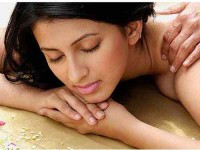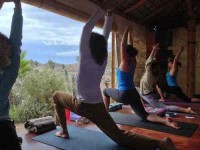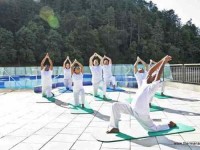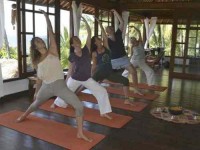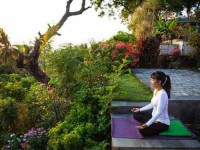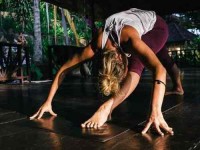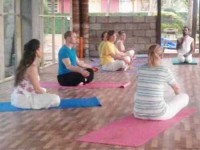Your shopping cart is empty!
Ayurveda Yoga
10-дневный-аюрведа-омоложение-и-йога-в-керала-индийское Школа Йоги Vidhya Аюрведа омоложение и Йога Обогащение в программе Индии
Старение процессы разлагающихся ваши клетки и ткани вашего тела. С течением времени и ва..
10-дневный-аюрведа-йога-отступлением-в-Балийской Северной Пляжи Йога Аюрведа Программы
йога
Ежедневная программа йога нежна и восстановительное. Терапевтические методы йогические выбирают так, чтобы дополн..
10-дневный-аюрведа-йога-подготовки учителей-в-México Йога программы Института Мексика Йога подготовки учителей Yandara
Во время этой подготовки учителей йоги, вы будете изучать основы Аюрведы, от санскритского слова в..
10-days-special-yoga-and-ayurveda-retreat-in-sri-lanka Barberyn Reef Ayurveda Resort Retreat Program
Our day will begin with meditation before a Vinyasa flow class to help awaken your mind, body, and soul. You will th..
11-дневный-аюрведа-йога-отступлением-в-Словению Thermana Лако Йога и Аюрведа Retreat Program
принципы Аюрведы
Аюрведа четко определяет методы для поддержания здоровья и лечения заболеваний с терапии, масса..
13-дневный-аюрведа-и-аква-лечебно-йога-отступлением-в-Балийской Прана Веда Бали Sanctuary Йога Retreat Программа Бали
Часть отступления является йога, пранаяма, медитация, аюрведические учения, аюрведический чистки и ..
14 дней-антистресс-йога-и-аюрведа-отступлением-в-бали Zen программы Йога Курорт Анти-стресс
1 день
Во второй половине дня прибытие
MandiLulur - традиционный массаж
Цветочные ванны
..
14 дней-аюрведа-и-йога-детокс-отступление в Таиландом состоянии ума центр аюрведы и программы Retreat Йога
Основная цель любого Аюрведа терапии является определение лицам идеальное состояние баланса и предложения мер ..
14 дней-аюрведа-йога-отступлением-в-Kannur-индийское Ayuryoga Академия Аюрведы Йога Retreat в Индии программы
Navajeevan специально разработан полный 14 дней оздоровительная программа, которая подходит для всех тех, к..
DEFINITION OF AYURVEDA
Ayurveda is the most ancient and traditional system of medicine in India. The Ayurvedic system of medication is based on many centuries of experience in medical practice, handed down through generations. Ayurvedic medicine originated in the eariy civilizations of India some 3000 to 5000 years ago, making Ayurvedic medicine the oldest surviving healing system in the world.
The word Ayurveda is formed by the combination of two words - "ayu"-meaning life, and ’Veda" meaning knowledge. Ayurveda is regarded as" the science of iife" and the practice involves the care of human beings.
Specifically the two principal objectives of Ayurveda are;
1. To prolong life and promote perfect health; and
2. To completely eradicate the disease and dysfunction of the body.
Ayurveda is a form of alternative medicine that is the traditional system of medicine of India. The practice of Ayurveda is intrinsically holistic and preventive in intent. Perfect health in the Ayurveda system involves not only physical wellness, but also emotional, mental, and spiritual wellness. Treatment aims to promote and maintain balance in order to prevent disease or when necessary, cure diseases.
DEFINITION OF YOGA
Yoga is a term that comes from the ancient Sanskrit word, "yuga". Yoga discipline originated in India and it dates back 5,000 years. Many different interpretations of the word Yoga have been given over the centuries. Some of these are "to unite", "to be one with the Divine", and "a science of self-realization". Yoga brings about union of the different bodies - physical, emotional, mental and spiritual.
Yoga is not just a series of stretching and strength postures. According to T.K.V. Desikachar in his book The Heart of Yopa", he states that..."However beautifully we carry out an asana (posture), however flexible our body may be, if we do not achieve the integration of body, breath, and mind we can hardly claim that what we are doing is Yoga. What is Yoga after all? it is something that we experience inside, deep within our
being. Yoga is not only an external experience. The purpose of Yoga is to unify the actions."
Ancient Yogis had a belief that in order for man to be in harmony with himself and his environment, he has to integrate the body, the mind, and the spirit. For these three to be integrated, emotion, action, and intelligence must be in balance. The Yogis formulated a way to achieve and maintain this balance and it is done through exercise, breath, and meditation.
AYURVEDA AND YOGA AS SISTER SCIENCES
Yoga and Ayurveda are two closely related spiritual or sacred sciences rooted in the Vedic tradition of India. Ayurveda is the Vedic science of healing for body and mind. Yoga is the Vedic science of self-realization that depends upon a well functioning body and mind. Both disciplines.developed together and have always been used together. Yoga and Ayurveda are far more than physical exercise or bodily healing systems such as we tend to view them today. Both classical yoga and Ayurveda looked at the whole human being, which is not only body but includes mind and soul. Both address all our needs from physical health and well-being to the unfoldment of our higher consciousness.
Ayurveda ( "Science of Life") - usually written in one word Ayurveda - the name of the native Indian system of medicine. Ayurveda is essentially natural, that is, naturopathic medicine, which emphasizes the prevention of disease, but also has an extensive therapeutic arsenal. She practiced in India along with modern medicine and promoted as a way of life for those who wish to enjoy good health and longevity. Although Ayurveda can not be regarded as a philosophical tradition, it is based on Hindu metaphysics. Traditionally, Ayurveda is considered complementary to the Atharva Veda. In this sacred text, we find the earliest discussions about anatomy and medical and preventive medicine. Because of its cultural significance, Ayurveda is sometimes regarded as the fifth part, or "assembly" of the Vedic heritage. Ayurvedic body of knowledge, according to legend, the first to contain up to a hundred thousand lines, collected in a book with more than a thousand heads. Although medicine is undoubtedly practiced in the early Vedic era, none of this work volume has not reached our days. The earliest extensive medical encyclopedic works plan are Sushruta Samhita and Charaka Samhita. The oldest part of the first labor are dobudtsiyskomu time, but in its present form it was completed only in the first century AD. Sushruta is mentioned in the Mahabharata (01/04/55) as the grandson and son of the king Gadhi sage Vishwamitra, who updated chronology that is contained in this book takes place in about sixty-two generations before the Bharata war, that is about 3000 BC. e. Sushruta name literally means "good to hear," saying that he was able to perceive and comprehend the transmitted knowledge. How original can be medical knowledge, as set out in the vast Sushruta Samhita, one can only guess. However, we know from the hymns of the Rig Veda and the Atharva Veda, in the Vedic era were skillful physicians.
Second meeting on medicine, which is also often remodel its present form, probably acquired about 800 AD. e. However, the alleged author, Charaka, lived, it seems, for many centuries before, because according to legend, he was a court physician of the king Kanishka (78-120 years. BC. E.). Charaka name reminds us that ancient physicians - although perhaps not the famous Charaka - usually traveled (Chara), offering their services to voodoo.
Like the classical yoga consisting of eight "links", the Ayurvedic system of medicine - according to the Sushruta Samhita (1.1.5-9) - is divided into eight parts: (1) Surgery (Shalya); (2) the treatment of diseases of the neck and head (Shalakov); (3) treatment of physical illnesses of the body, arms and legs, that is, the total therapy (kaya-Chikitsa); (4) treatment of childhood diseases, pediatrics (kaumara-bhrtam) \ (5) methods of counteracting harmful occult influences, ie ekzortsistika treatment obsessed (bhuta-vidya); (6) the doctrine of antidotes (Agada Tantra); (7) of the body rejuvenation techniques, known as Rasayana, ie Pharmacopoeia; and (8) the means to strengthen the potency (vadzhikarana).
External similarities between Ayurveda and Yoga of Patanjali vosmizvennoy, celebrate Hindu sources, purely accidental, although some traditional sources drew attention to this parallel. However, there are a number of important concepts and methods that are common to Ayurveda and Yoga. The most remarkable thing is that the authors and editors of the aforementioned initial medical papers resorted to the tradition of the philosophy of yoga and Sankhya. Therefore, on the one hand, Sushumna-samhitapredstavlyalas revised in the light of the dualistic system of thought Ishvarakrishny - as set out in its samkhyakarika. On the other hand, Charaka-samhitasoderzhit echoes of metaphysics epic Sankhya Yoga. It is also necessary to mention that some of the ancient Sanskrit commentators believed that the same Patanjali wrote the Yoga Sutra, also wrote a famous treatise on grammar, and another one - but medicine. And Ayurveda and yoga emphasizes the mutually influencing the unity of body and mind. Physical ailments can be detrimental affect on your mind and mental imbalance can lead to all sorts of diseases. Presentation of Ayurveda for a healthy life requires that it should be both happy (sukha) and morally virtuous (hit). Happy life, by definition, Ayurveda, physically and mentally healthy and cheerful, as well as moral and even wise. The close relationship between moral behavior and happiness is also emphasized in the yogic literature.
Ayurveda Experts advise foster calmness, self-knowledge and wisdom. Today we might say that the Indian healers have implemented self-actualization (in the understanding of Abraham Maslow) in its theory and practice. We fully share the view that such a life would have created a sound basis for understanding the spiritual significance of Self (atma-jnana). In his book, Ayurveda and the mind David Frawley (Frawley) dares to say that:
Ayurveda - a branch of yoga
the science of healing. Yoga - is the spiritual aspect of Ayurveda. Ayurveda - a therapeutic yoga section.
Ayurveda and yoga unites the theory of the various currents of life (Vayu) in the human body, which is mentioned in the time of the Atharva Veda. Medical experts generally account for thirteen channels (honeydew) on which or along which is believed to move different types of life force (prana), while in hatha yoga writings commonly referred to fourteen basic pathways. Often distinguish data channels and larger conductors (referred dhamani) carrying a liquid such as blood, and so on. N. Ayurvedic model of the network of channels does not coincide with the tantric scheme, which is more related to the subtle body. In hatha yoga is considered to be important to begin the practice of breath control at the right time of year. Medical basis for this is given in Ayurveda, according to which the bodily juices (dosha) subject to influences in accordance with the seasons. The concept of the homes also contained in a number of books on yoga, such as Yoga Bhashya (1.30) of the fifth century, where the disease is defined as "an imbalance constituents (dhatus), [bodily] secretions (race) or the internal organs." In his glossary of the ninth century to the text Vacaspati Mishra explains that these constitute the essence of air (Vata), bile (Pitta) and phlegm (Kapha), in other words, doshi.Eto medical terminology.
On the doshas are often referred to in the literature on hatha yoga, which deals with the optimal functioning of the human body. Health considered how to achieve a balance between the bodily constituents. They are present throughout the body, but in varying concentrations in various places. That is vatapreobladaet in the nervous system, heart, colon, lung, bladder and renal pelvis; Pitta is dominant in the liver, bile, small intestine, endocrine glands, blood and sweat; of kapha prevails in the joints, in the mouth, head and neck, stomach, lymph and adipose tissue. Vata tends to accumulate in the area below the navel, kapha - above the diaphragm, and pitta - between the diaphragm and the navel.
In addition to the three doshas Ayurveda also distinguishes seven types of tissues (dhatus) and three impure substance (small). Dhatus include blood plasma (races (a)), the blood (Rakta), flesh (maize), oil (honey (c)), bone (asthi), bone marrow (madzhdzha (s)) and semen (Shukra). Mali, or isolation, are feces (Purishev), urine (ICTR), and sweating (Sweda, lit .: "sweat"). These physical components are also sometimes referred to in yogic literature.
Ayurveda and yoga share similar views and relatively vulnerable or sensitive areas (Marmal), which are mentioned in the Rig Veda (6.75.18). According to Ayurveda, there are 107 Marmagne - the vital connection between the flesh and muscles, bones, joints and tendons, or between veins. Bounce on some of these Marmagne can cause death, that is part of the secret knowledge of the Chinese and Japanese martial arts. Practice kalarippayattuboevyh Arts of North India vary from 160 to 220 vulnerable points on the human body. The system treats the body as consisting of three layers, namely, a body of liquid (including isolation and tissue products); solid body from the muscles, bones and Marmagne; and the subtle body consisting of channels and frequented places of vitality. Damage Marmal interrupts the wind element, thereby causing severe physical disorders that can result in death. Sometimes a sharp slap in the damaged area produced immediately, can recover for the vitality and thus avoid the most hudshego.Marmany depend on the current of prana, and without great-Marmagne us does not happen. The flow of life force through these sensitive points controlled by the moon. A similar doctrine is present in ancient Hindu sexology, which advises to initiate some sensitive areas only to the special lunar days on the female body.
Some yogic texts, like Shandichya-unanishady (1.8.1 and later) are talking about eighteen Marmagne, and according Kshurika-upanishadeyogindolzhen cut these vital points by means of "mind sharp blade." In other words, here Marmal seem to understand how congestion on the path of the life force, which are removed with the help of focus and breath control.
An important concept taken Ayurveda and yoga is the idea of Ojas, or vital energy, which is mentioned in the Atharva Veda. Both systems seek to increase Ojas (ie "lower" limit) by various means. In yoga, often to enhance the vitality recommended abstinence. Ojas decreases over time and weakens due to starvation, poor nutrition, fatigue, irritability and anxiety - all the physical and mental circumstances that poison the joy of life. Opposing them Ojas terms of produce and thus ensure good health. When odzhasanedostaet long time, it causes degeneration of the tissues and premature aging.
Ojas is present throughout the body, but especially - in the heart, which is also the seat of the physical consciousness. Chakrapani in his commentary on the Charaka Samhita recalls that while in the body contains half of the "lower Ojas", in the heart is kept only eight drops of "higher Ojas". The smallest decline of this precious life energy, is believed to cause death, and can not be replenished.
Further, Hatha Yoga and Ayurveda have some common purification methods, especially the practice of samovyzyvaemoy vomiting (Vamana) and physical purification (Dhauti). These techniques are, inter alia, have a healing effect on the body's metabolism. In addition, Ayurveda thirteen known species of internal heat (lights), of which Hatha yoga experts often mention the digestive heat (dzhagphara-agni).
Physical health (arogya) is definitely one of the requirements and milestones of hatha yoga. Even Patanjali in his Yoga Sutra (3.46) refers to the "hardness of diamond is" the body as one of the sides of bodily perfection (kai-sampada). In another judgment (2.43) Patanjali speaks perfect body and senses "due to elimination of impurities through asceticism." In addition, he says (2.38) that "when adopting abstinence [there is] the acquisition of energy (virya)." In the judgment of Patanjali lists the disease again (vyadhi) as one of the distractions (vikshep) consciousness that impedes the progress of yoga.
Shiva svarodaya, yogic work, which for several centuries, puts control of the breath as the primary means of gaining or maintaining health and obtaining of occult knowledge and magical abilities, and wisdom, and even liberation. In one verse (314) argues that the way svarodaya - from slovsvara ( "sound [breath]") and Uday ( "lift") - is a science, preached Siddha yogis.
The Sat-karma-sangraham ( "Code of right conduct"), yogic works attributed Chidghananande, student Gagananandy of Nath sect, represented by a number of purification practices. They aim to prevent or cure all kinds of diseases caused by a disaster or negligence in complying with the prescribed rules of supply and other regulations, such as those that are associated with the choice of the right time and place. Chidghanananda advises the yogi to resort to self-treatment first postures (asana) and occult drugs. If they do not help, then he should refer to the methods set out in the text.
The link between yoga and Ayurveda it is recognized in the work of the sixteenth century, Ayurveda Sutra, written Yoganandanathom, especially where the author uses the Yoga Sutras of Patanjali, and also offers diet and fasting as an effective means to maintain health. Food is seen from a position of relative predominance of the three modes. Gunas - Sattva, Rajas and Tamas - are also included in the medical theory of Ayurveda. Mismatch in bodily constituents and juices implies mismatch in the modes, and vice versa. Every finite existence is somehow a consequence of imbalanced modes; Only the transcendental nature (Prakriti-pradhana) they are in complete equilibrium. Sometimes three juice (dosha) are considered as somatic disorders, as well as the three modes of mental defects. They are related as follows: wind - sattva; bile - rajas; Slime - Tamas.
One of the practices of Ayurveda, which is close contact with the ideal of hatha yoga to create a lasting, if not immortal, the body - is kaya-kalysh. It is a difficult rejuvenation ritual that requires a long seclusion in the dark, strict dietary restrictions and secret potions. Modern Saint Tapasvidzhi Maharaj reportedly took place this treatment several times, each time being from his solitary confinement in a dark hut completely rejuvenated.
The close relationship between Ayurveda, yoga and alchemy (rasayana, from the words of a race "essence" or "mercury" and Ayana "way") is particularly noticeable in the medieval tradition of Siddha North India. Proponents of this important tradition searched bodily immortality through sophisticated psychophysical technique known as kaya-sadhana, or "nurturing the body." From it grew the different schools of hatha yoga, which, in some ways, can be seen almost as a preventive section of Hindu medicine. It is interesting that one book on medicine - some Vrinda - is called Siddha Yoga. Another medical treatise, attributed to Nagarjuna, is called Yoga Shatak ( "One Hundred [lines] of yoga").
In South India, the second independent medical system, which is equivalent to Ayurveda was created. This system is associated with the Siddha tradition in the Tamil-speaking areas. Even more than Ayurveda, it is distinguished by a close link with alchemy and the use of a large number of potions from plants and chemicals. Its three main diagnostic and therapeutic agents are astrology, mantras and medicines, known in Tamil respectively as the mani, and mantiram maruntu. It also uses postures (asana) and breath control.
Categories
- Anusara Yoga
- Aqua yoga
- Ashtanga Yoga
- Ayurveda Yoga
- Bhakti Yoga
- Bihar Yoga
- Bikram / Hot Yoga
- Dynamic Yoga
- Hatha Yoga
- Himalayan yoga
- Hridaya yoga
- Integral yoga
- Iyengar Yoga
- Jivamukti Yoga
- Kripalu Yoga
- Kriya Yoga
- Kundalini Yoga
- NEW INDIA
- Nidra Yoga
- Power Yoga
- Restorative Yoga
- Sivananda Yoga
- Tantra Yoga
- Taoist yoga
- Vinyasa Yoga
- Yin Yoga
- Yoga flow
- All yoga retreats
- DESTINATION: India +
- Costa Rica
- Greece
- Indonesia
- Italy
- Mexico
- Morocco
- Portugal
- Spain
- Thailand
- Turkey
- USA
Welcome visitor you can login or create an account.


